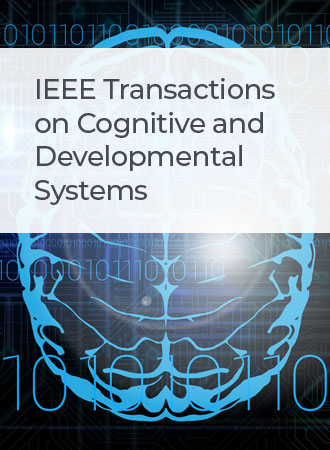D-FaST: Cognitive Signal Decoding With Disentangled Frequency–Spatial–Temporal Attention
IF 5
3区 计算机科学
Q1 COMPUTER SCIENCE, ARTIFICIAL INTELLIGENCE
IEEE Transactions on Cognitive and Developmental Systems
Pub Date : 2024-02-26
DOI:10.1109/TCDS.2024.3370261
引用次数: 0
Abstract
Cognitive language processing (CLP), situated at the intersection of natural language processing (NLP) and cognitive science, plays a progressively pivotal role in the domains of artificial intelligence, cognitive intelligence, and brain science. Among the essential areas of investigation in CLP, cognitive signal decoding (CSD) has made remarkable achievements, yet there still exist challenges related to insufficient global dynamic representation capability and deficiencies in multidomain feature integration. In this article, we introduce a novel paradigm for CLP referred to as disentangled frequency–spatial–temporal attention (D-FaST). Specifically, we present a novel cognitive signal decoder that operates on disentangled frequency–space–time domain attention. This decoder encompasses three key components: frequency domain feature extraction employing multiview attention (MVA), spatial domain feature extraction utilizing dynamic brain connection graph attention, and temporal feature extraction relying on local time sliding window attention. These components are integrated within a novel disentangled framework. Additionally, to encourage advancements in this field, we have created a new CLP dataset, MNRED. Subsequently, we conducted an extensive series of experiments, evaluating D-FaST's performance on MNRED, as well as on publicly available datasets including ZuCo, BCIC IV-2A, and BCIC IV-2B. Our experimental results demonstrate that D-FaST outperforms existing methods significantly on both our datasets and traditional CSD datasets including establishing a state-of-the-art accuracy score 78.72% on MNRED, pushing the accuracy score on ZuCo to 78.35%, accuracy score on BCIC IV-2A to 74.85%, and accuracy score on BCIC IV-2B to 76.81%.D-FaST:频率-空间-时间注意力分离的认知信号解码
认知语言处理(CLP)是自然语言处理(NLP)和认知科学的交叉学科,在人工智能、认知智能和脑科学领域发挥着举足轻重的作用。在认知语言处理的重要研究领域中,认知信号解码(CSD)已经取得了令人瞩目的成就,但仍然存在全局动态表征能力不足和多域特征整合方面的缺陷等挑战。在本文中,我们介绍了一种新颖的中长期语言学习范式,即频率-空间-时间分离注意力(D-FaST)。具体来说,我们提出了一种新型认知信号解码器,该解码器可在频率-空间-时间分离域注意力上运行。该解码器包括三个关键部分:采用多视角注意力(MVA)的频域特征提取、利用动态脑连接图注意力的空间域特征提取,以及依靠局部时间滑动窗口注意力的时间特征提取。这些部分被整合到一个新颖的分离框架中。此外,为了鼓励这一领域的进步,我们还创建了一个新的 CLP 数据集 MNRED。随后,我们进行了一系列广泛的实验,评估了 D-FaST 在 MNRED 以及 ZuCo、BCIC IV-2A 和 BCIC IV-2B 等公开数据集上的性能。我们的实验结果表明,D-FaST 在我们的数据集和传统 CSD 数据集上的表现都明显优于现有方法,包括在 MNRED 上获得 78.72% 的最高准确率,将 ZuCo 的准确率推高到 78.35%,将 BCIC IV-2A 的准确率推高到 74.85%,将 BCIC IV-2B 的准确率推高到 76.81%。
本文章由计算机程序翻译,如有差异,请以英文原文为准。
求助全文
约1分钟内获得全文
求助全文
来源期刊

IEEE Transactions on Cognitive and Developmental Systems
Computer Science-Software
CiteScore
7.20
自引率
10.00%
发文量
170
期刊介绍:
The IEEE Transactions on Cognitive and Developmental Systems (TCDS) focuses on advances in the study of development and cognition in natural (humans, animals) and artificial (robots, agents) systems. It welcomes contributions from multiple related disciplines including cognitive systems, cognitive robotics, developmental and epigenetic robotics, autonomous and evolutionary robotics, social structures, multi-agent and artificial life systems, computational neuroscience, and developmental psychology. Articles on theoretical, computational, application-oriented, and experimental studies as well as reviews in these areas are considered.
 求助内容:
求助内容: 应助结果提醒方式:
应助结果提醒方式:


